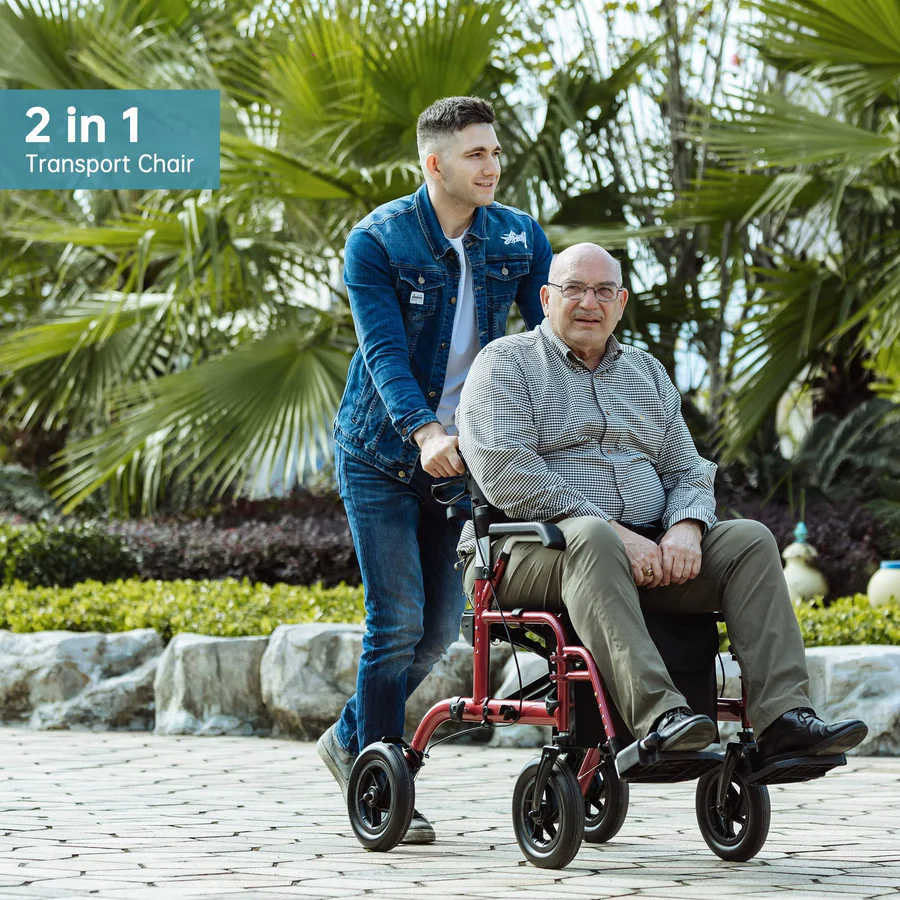Living with muscular dystrophy (MD) brings a lot of challenges, especially when it comes to moving around. As muscles weaken over time, everyday tasks like walking or standing can become tough. That’s where mobility aids, like mobility walkers, can really help make life easier and safer. But are these walkers truly beneficial for people with muscular dystrophy? Let’s chat about it.
Why Mobility Matters in Muscular Dystrophy
Muscular dystrophy is a group of diseases that cause muscle weakness and loss of muscle mass. This doesn’t happen overnight but gradually, which means mobility changes slowly too. In the early stages, you might feel a bit wobbly or tired after walking. As time goes on, the risk of falls increases, and walking long distances becomes harder.
Maintaining independence and getting around without too much strain is super important for anyone with MD. It’s not just about physical health — staying active and mobile also supports mental well-being and confidence.

How Mobility Walkers Help
Mobility walkers can provide the extra support and stability needed to get around more comfortably and safely. Here’s how they benefit people living with muscular dystrophy:
Extra Support and Balance: Muscular dystrophy can make your muscles weak and unsteady. Mobility walkers give you something stable to lean on, which helps reduce the risk of falls and boosts confidence when walking.
Energy Saving: Using a walker means your muscles don’t have to work as hard to keep you steady. This can be a huge help when fatigue sets in, letting you go further without getting as tired.
Versatile Options: For people with MD, different types of mobility walkers might fit better at different stages. For example, a rollator walker with seat is fantastic because you can take breaks when needed — just sit down and rest without having to find a chair.
Lightweight Models: Not all walkers are heavy or clunky. The lightweight rollator walker options make it easier to move the walker itself, so you don’t get stuck pushing something that’s too heavy. This is great if your strength is limited.
Transport and Convenience: Sometimes, you might need to take your walker along in a car or on public transport. A rollator walker transport chair can fold up and double as a chair you can be pushed in, making travel much easier.

Choosing the Right Mobility Walker
Since muscular dystrophy affects people differently, picking the right walker is really important. Here are a few things to keep in mind:
Comfort: You want a walker that feels good to use. Padded seats, comfortable grips, and adjustable handles can make a big difference.
Weight: If your muscles are weak, a heavy walker might be hard to manage. Look for a lightweight rollator walker that you can easily push and carry.
Functionality: Features like a seat, storage basket, or brakes should match your daily needs. A walker rollator with good brakes gives you control and safety.
Portability: If you travel or move around different places often, a walker that folds easily or turns into a transport chair is super handy.
Stability: Because balance can be an issue, make sure the walker has a wide base and sturdy frame to prevent tipping.
Real-Life Benefits for People with Muscular Dystrophy
Many people with MD say their mobility walker helps them keep going longer during the day. Instead of getting worn out after a few steps, they can walk more comfortably and rest when they need to. This kind of independence matters a lot — it can make a huge difference in day-to-day life.
Plus, mobility walkers encourage movement. Staying active, even just a little bit, helps maintain muscle strength and slows down stiffness. While walkers don’t cure or stop MD, they definitely make moving around less stressful and more manageable.
Addressing Concerns and Challenges
Some people worry that using a mobility walker might make muscles weaker because you’re relying on it. Actually, walkers can help you stay active safely rather than avoiding movement altogether. Using the walker to get around means you’re still engaging your muscles, just with support.
Another concern is the social or emotional impact. Nobody wants to feel “different” or “dependent.” But mobility aids are tools that help you live your life fully. Many people with muscular dystrophy find that using a walker actually opens doors to more social activities and better quality of life.
When to Get Help Choosing a Mobility Walker
If you or someone you care about has muscular dystrophy, it’s a good idea to chat with healthcare professionals before picking a walker. Physical therapists, occupational therapists, or mobility specialists can recommend the best type based on your strength, balance, and daily activities.
They can also help you practice using it safely and comfortably, which makes the transition smoother.
Mobility walkers offer great benefits for people with muscular dystrophy. They provide extra support, help save energy, and promote independence. Whether it’s a rollator walker with seat, a walker rollator, or a lightweight rollator walker, choosing the right one can make a big difference in how you move and feel every day.
And if you’re often on the go, considering a rollator walker transport chair might be a smart move. Whatever stage of muscular dystrophy you’re at, the right mobility walker can help you stay active, confident, and comfortable — that’s what really counts.
